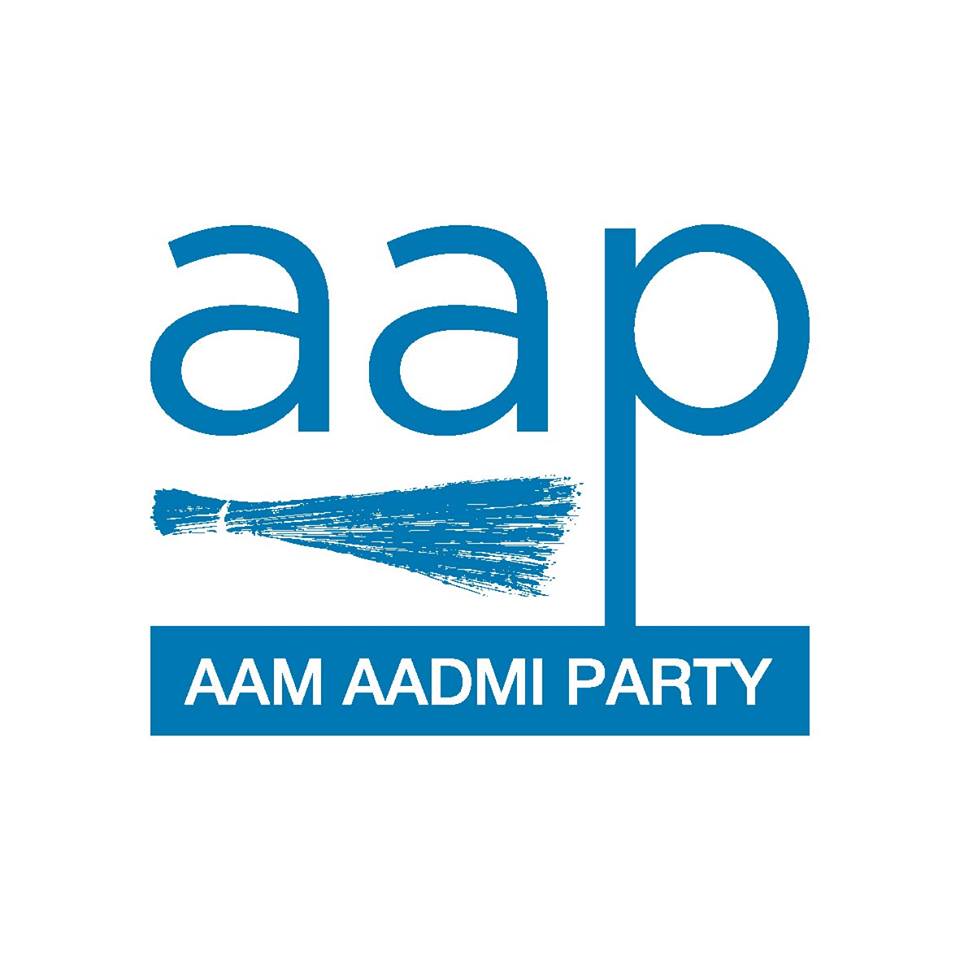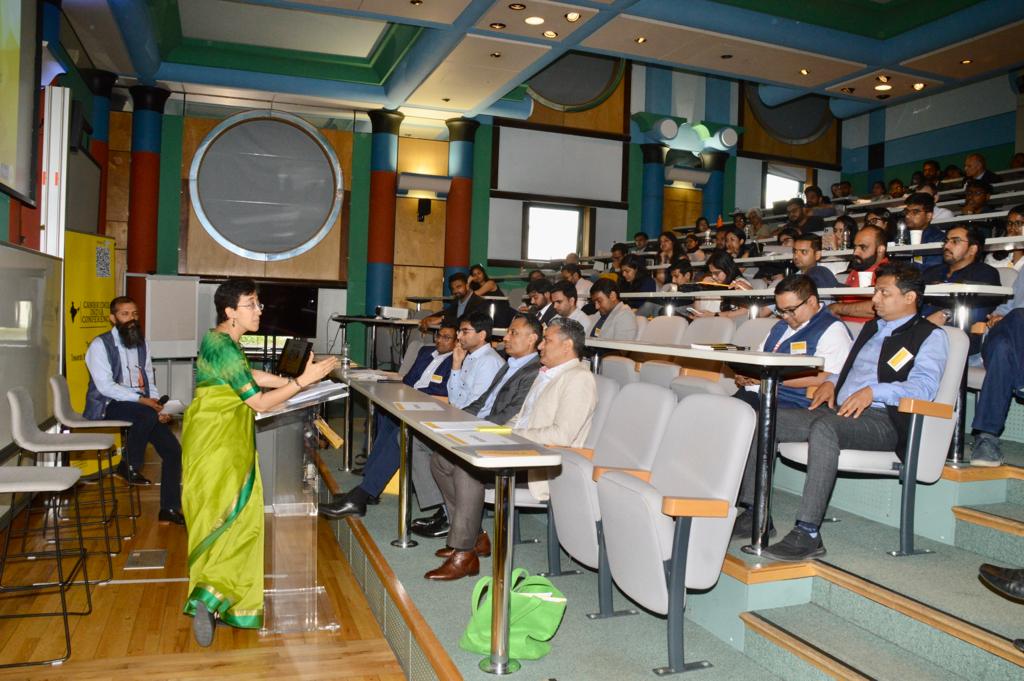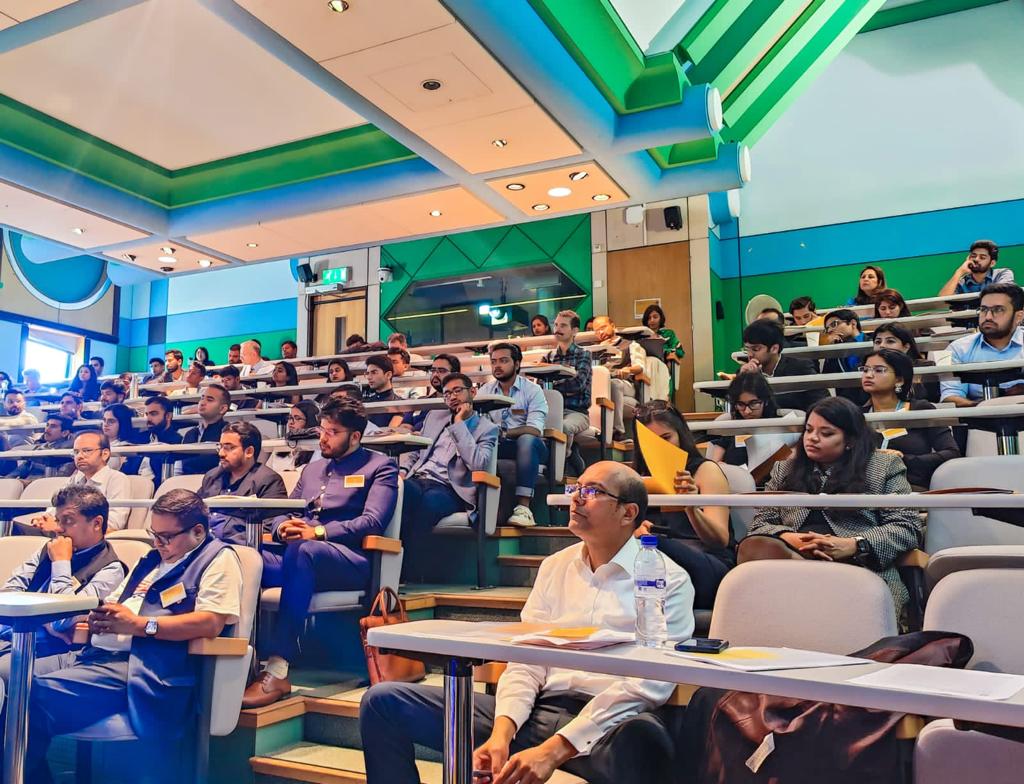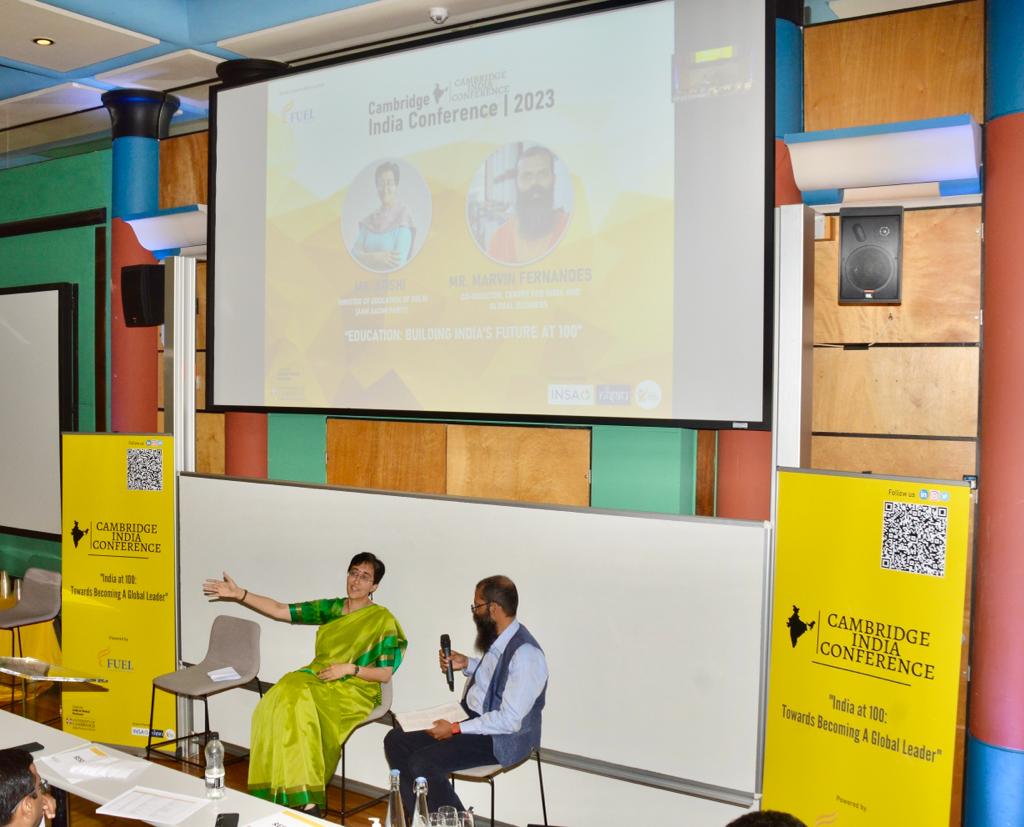In the past 75 years, it is for the first time in the democratic history of India that politics is being done on governance and parties across the country have education and health as their top agenda. This major shift in the politics of India has been brought about by Delhi CM Shri Arvind Kejriwal with his exemplary work over the past 8 years. He has, keeping aside all other issues, given priority to high-quality education for every child and quality health care for everyone in Delhi. As a testimony to the impact of the Delhi governance model, even the PM had to attend school, though a fake one in a porta cabin, before the Gujarat elections to launch an education scheme. These were the words of Education Minister Ms. Atishi at Cambridge India Conference hosted by Cambridge Judge Business School on June 15. Ms Atishi was at Cambridge to speak on the topic “Education- Building India’s Future at 100” during the conference. She also shared various success stories of the Delhi Education Model there.
Continuing her speech she said, “One of the significant accomplishments of the Kejriwal Government’s Delhi Education Model is that during AAP’s participation in the Gujarat Elections, where the BJP had been in power for 27 years, we compelled the Prime Minister, Home Minister, and the Gujarat Chief Minister to visit schools and have their pictures taken. It was the first time in 27 years that they had ever visited schools. Although the school the Prime Minister visited was a fake one housed in a portable cabin, he still had to go there, sit among the children in the classroom, and launch an education scheme. If political parties across the nation have started recognizing education and health as crucial focal points for election campaigns, then this stands as our greatest achievement.”
The Education Minister further said, “It is really concerning that it took us 75 years of independence to discuss politics that delivers these basic amenities. It has taken so many years for governments to prioritize education and healthcare. In the past 75 years, we have not had a single political party that claimed to transform the education system of the country and provide quality education to every child, regardless of their background.”
Ms. Atishi mentioned that when she was in school 25 years ago, economics was introduced as part of Social Science, and the opening chapter of the Class 9 textbook categorized countries into three groups: Developed Countries, Developing Countries, and countries with underdeveloped economies. India was placed in the second category as a developing country. The narrative at the time was that India would become a developed country by 2020. However, despite the narrative of the country’s growing economy, India still carries the tag of a “developing country.”
She pointed out that although we are often told that India’s GDP has crossed the $3.5 trillion mark and it is the fastest-growing G20 economy, the reality is more worrying and requires immediate attention. One key indicator of the country’s situation is the Human Development Index, where India ranks 132 out of 191 countries. Several smaller countries or countries considered comparable to India, such as Bhutan, Bangladesh, and Sri Lanka, have higher ranks in this index.
It is often highlighted that India has the largest number of growing billionaires, with the number increasing from 102 in 2020 to 166 in 2022. However, another figure during this period is the number of hungry people in the country, which grew from 19 crores to 35 crores. This is alarming considering that India is the second-largest producer of food in the world. Despite this, it has the largest number of malnourished or undernourished people, she added.
The Education Minister further said, “While there is a narrative of a growing and shining India, there is also the reality that 140 crores of people in this country do not have access to education, healthcare, nutrition, or employment. The richest 1% of the country owns 40% of India’s wealth, while the bottom 50% of the population owns only 3%. Thus, while the GDP may be growing, it is primarily benefiting the richest, while the majority of the population suffers. This has led to situations where people have to choose between saving a family member’s life through treatment or their last available asset.”
She added that the NSS survey last year revealed that 17% of the population had to make catastrophic expenses to ensure their family members received treatment. Additionally, ASER reports released every year indicate that nearly 50% of children who go to school are unable to read and write. The average Indian family spends 30% of its household income on education for their children. Unemployment is also a pressing issue, with 4.8 crore people currently unemployed in the country.
Ms. Atishi shared that the main problem lies in politics. She said, “The young generation often perceives politics as a negative word, resulting in individuals with questionable backgrounds entering politics and making decisions that affect the lives of the people. She emphasized that politicians currently lack incentives to do something good. During elections, politicians rely on religious and caste cards, as well as money and liquor, to win votes. They prioritize winning elections rather than providing quality education and healthcare. This has led to a lack of progress in improving the lives of the people, regardless of which party comes into power.” Now the onus of changing this and seeing India growing as a global leader at 100 is on educated youth, who must take the lead, she added.
Speaking about what the Delhi government did differently under the leadership of CM Shri Arvind Kejriwal, Ms. Atishi said, “In the past few years, there has been a shift in the narrative due to CM Shri Arvind Kejriwal, who is an engineer by profession and aspired to change the way politics is conducted in the country. It is a fact that he and the Aam Aadmi Party have transformed the political landscape through a people-centric governance model. This marks a significant change where politics is focused on governance in India for the first time. After being elected as Chief Minister for the second time in 2020, following five years in power, Shri Arvind Kejriwal appealed to the people to vote for him only if they believed he had made a positive impact during his tenure. This approach, where governance is central to politics, is unprecedented in the democratic history of the country. Considering the accomplishments of the Aam Aadmi Party in Delhi over the past 8 years, it becomes evident that the answer to the question of India’s development at 100 is not very difficult.”
She added, “Ordinary people do not have complex wishes; they simply want better education for their children, improved healthcare facilities for their families when needed, a safe environment when they go out, and good employment opportunities. The first and most important thing that the Kejriwal government did after coming into power was the allocation of the budget to education. The Aam Aadmi Party-led Delhi government is the only government in the country that allocates 25% of the annual budget to education. It has been 8 years now.”
The Education Minister added that the next highest expenditure on education by any state government in India is 14%. The central government of India spends only 2.4% of its budget every year on education. This is the reason why families go into debt to educate their children in India. After education, the Delhi government has allocated the second-highest amount to the health sector, with 12%. The next highest expenditure on health by a state government is 6%, and the national expenditure is 0.69%.
She added, “When we first started to improve Delhi government schools, people made fun, considering that education had no potential to bring political dividends for the party back then. But despite all the political and administrative obstacles, the work done by the AAP-led Delhi government has been a landmark in Indian politics. It has successfully made education a political issue in the country. Not only that, but it has made education a political issue that brings dividends. This has made other state governments consider working on education and improving schools. I believe this change will determine the future direction our country takes.”
Ms. Atishi further said that at this point, the country has two models. The first model, which the AAP has presented for the past 8 years, aims to empower every citizen of the state by giving them access to education and enabling them to solve the country’s problems. The second model is that of the party in power in the central government, which is resorting to various means to imprison opposition leaders through agencies like CBI and ED, engaging in the sale-purchase of MLAs, and introducing ordinances that undermine the power of elected governments.
She said, “When we envision India at 100 years, we need to decide now whether we want a government that empowers every citizen and provides access to quality education, health, and basic facilities, or if we want a government that takes away empowerment from everyone?”
The Education Minister further added in her address to the audience, “I would like to say that politics and education are closely linked to each other. I believe the reason why our children have not been able to receive quality education in the past 75 years is that education has never been at the center stage of politics.”
Thereafter sharing the success stories and achievements of the Delhi Education Model, Ms Atishi said, “The success of Delhi government schools can be judged by the fact that today our children are gaining admission to India’s premier institutions. They talk about starting businesses and thinking of hiring IITians on the job.” Ms. Atishi then also shared how through Business Blasters the Delhi government schools are preparing students to contribute to the Indian economy through start-ups, with seed funding from the Government. Thereafter she shared the story of two Delhi government school students who recently graduated from Delhi government schools and gained admission to two premier IITs. One child’s father is a security guard, and the other’s father is a bus conductor. These students received support through the free coaching scheme that the Delhi government runs in its government schools.
Furthermore, she said, “We talk about various large-scale programs to eliminate poverty. But I believe that if we provide access to high-quality education to every child, they will uplift their families from poverty on their own. The government will not have to make any extra effort to eliminate poverty.”
“One of the major changes we see today in the Delhi Education Model is that, when the AAP government came to power in 2015, we used to receive requests for recommendations for admission to prestigious private schools. But now, when we opened admissions this year for the Delhi government’s Schools of Specialized Excellence, we received 92,000 admission applications for 4,400 seats. Now, we receive requests for recommending admission of children to these Delhi government schools,” said Education Minister Ms. Atishi.
“Moving forward, our focus is on transforming the primary schools in the city that comes under the Municipal Corporation of Delhi (MCD). These government schools have suffered from the same issues as their counterparts across the country. With this, we hope that soon people in Delhi will not have to line up outside private schools for nursery admissions,” she added.
Ms. Atishi said, “Any state in the country can adopt an education model like that of Delhi, and a shift in that direction is becoming increasingly visible, especially after the 2020 elections. Something fundamentally changed after that election when, based on the plank of education, AAP won 62 out of 70 seats. Subsequently, many parties became interested in the work that the Delhi government had been doing in the education sector. Today they are more than willing to contest the election on the basis of education.”
During her address at Cambridge, she also shared that Punjab is now following the Delhi Education Model and very soon the results of the same will be visible to the world.




